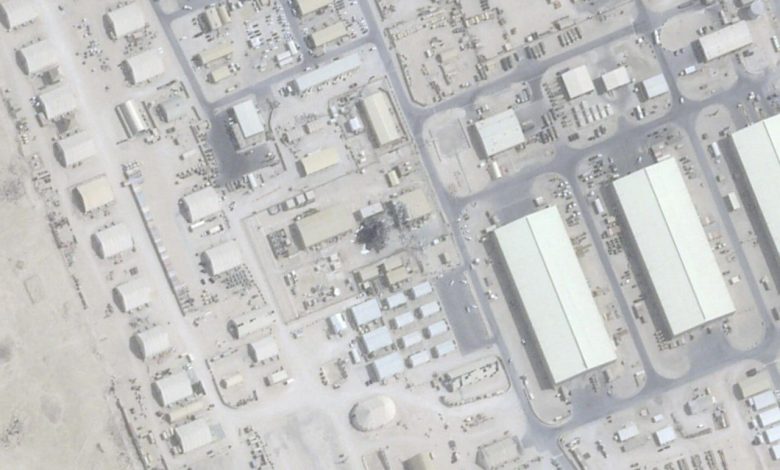Satellite Images Confirm Iranian Missiles Crippled US Al-Udeid Base’s Secure Comms Dome
Satellite imagery exposes how Iran’s missile strike shattered a secure US comms hub at Al-Udeid, raising new questions about the Pentagon’s interception claims.
Fresh satellite imagery has now laid bare the extent of damage inflicted by Iran’s latest ballistic missile attack on the sprawling US Al-Udeid Air Base in Qatar, shattering the Pentagon’s narrative that most missiles were intercepted and the impact was “minimal.”
High-resolution satellite photos from Planet Labs PBC, captured in the days before and after the June 23 Iranian barrage, unmistakably confirm that at least one ballistic missile slammed directly into a geodesic dome at the heart of Al-Udeid — a structure crucial for secure American military communications across the Middle East theatre.
This visual evidence, which is already circulating widely among open-source intelligence analysts and regional observers, shows the dome fully intact in images taken on the morning of the strike but completely obliterated just two days later.
The destruction of this modern terminal, which was installed in 2016 at an estimated cost of USD 15 million (approximately RM 71 million), underscores the ability of Iran’s precision-guided missiles to penetrate US missile defences even at one of Washington’s most heavily fortified overseas installations.
For a base long touted as the linchpin of American air dominance and rapid strike capability in the Gulf, the confirmed obliteration of its secure communications node is a potent demonstration of both the vulnerabilities of static infrastructure and the evolving missile threat Tehran can now project far beyond its borders.
Al-Udeid Air Base — situated roughly 35 kilometers southwest of Doha — remains the largest US military outpost in the Middle East and serves as the nerve center for all air operations conducted by US Central Command (CENTCOM) and US Air Forces Central Command (AFCENT).
Housing more than 10,000 American troops, contractors, and coalition partners, the sprawling complex boasts two 12,500-foot parallel runways, dozens of hardened aircraft shelters, and command bunkers purpose-built to coordinate complex air operations across the Gulf, Levant, and even parts of Central Asia.



